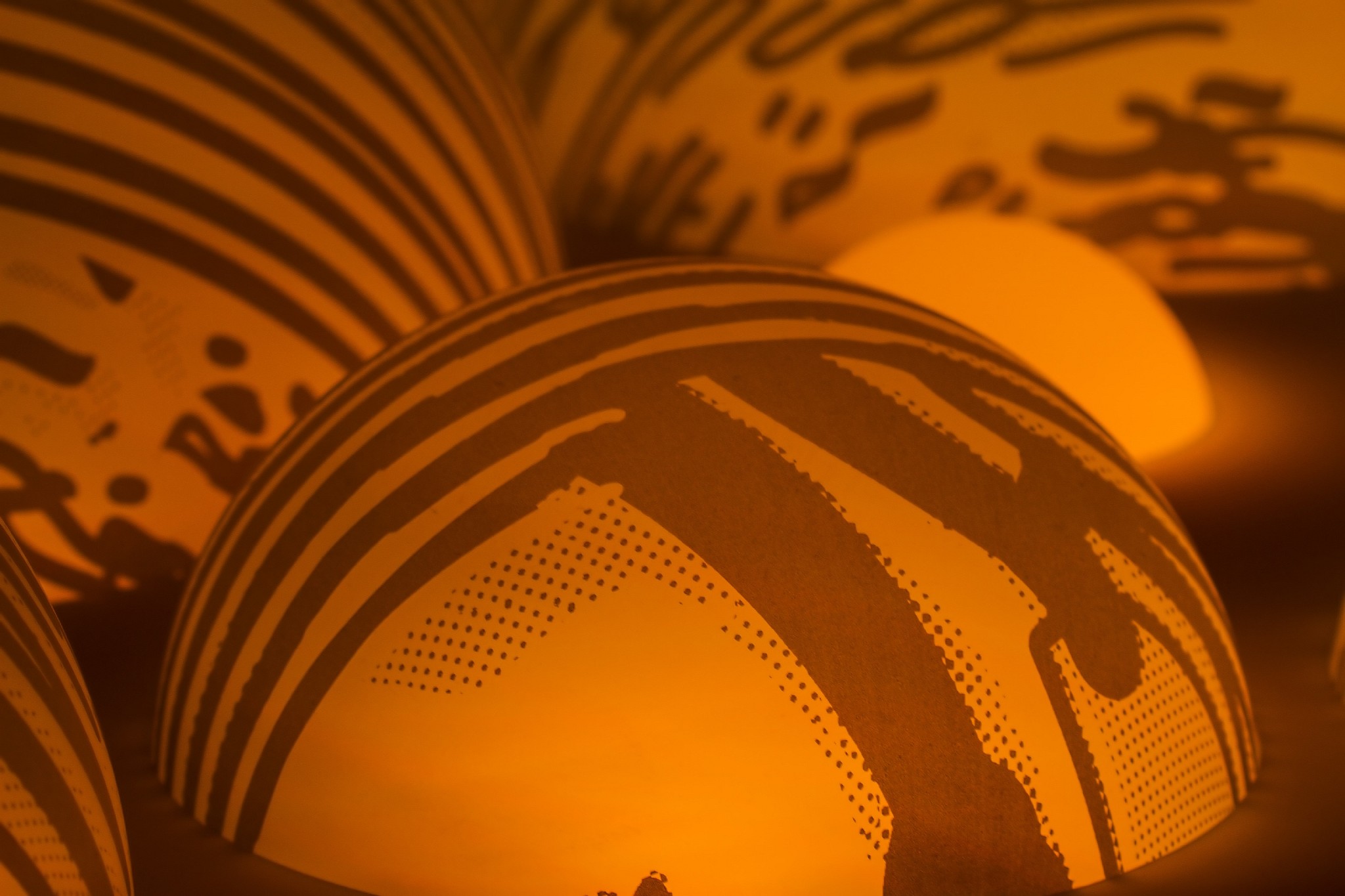PRESS RELEASE

Grimanesa Amoros
Feb 14 – May 23, 2013
Grimanesa Amorós emigrated from Peru to the United States in 1984 and studied painting and printmaking at the Art Students League of New York. The artist explored the medium and exhibited her work worldwide up until 2001, when she discovered her real medium was to be not paint but light. Trips back to her Peruvian homeland have provided Amorós with memorable images. Among these are the floating islands of Lake Titicaca, an ancient cultural monument that is extremely perishable. The lake, which is the world’s highest navigable body of water, is situated on the border between Peru and Bolivia and is famous for floating islands that the Uros people made entirely from thick layers of cut totora, a reed that grows abundantly in the lake’s icy fresh water. The Uros have lived on these islands for centuries, subsisting by fishing, hunting for birds and growing a few crops. The Uros use the totora reeds not only to construct the islands and to make their boats, houses and furniture, but as a food and fuel source as well. However, the islands require constant maintenance to survive. New layers of cut totora repeatedly must be added to replace those rotting beneath the surface of the water. The islands are kept afloat by the gases caused by this decay. The Uros people have had to cope with an evolving world. Today a string of approximately 60 floating islands attracts more than 200,000 tourists annually. As with so many other world heritage sites, tourism is endangering the very thing it seeks to preserve. Grimanesa Amorós often has drawn upon this important Peruvian cultural legacy for inspiration for her large-scale light-based installations, which she has presented around the globe from Mexico and Beijing to New York’s Times Square. In Light between the Islands, her first exhibition in Israel, the artist is sharing her passion for the Uros Islands, with deep reverence for their heritage, as well as concern for their future. Isolated throughout the gallery are islands she has created using polycarbonate bubble forms. Imagery reminiscent of totora reeds is silkscreened onto the spherical forms, which are illuminated from within. These glowing orbs change throughout the day and into the night, as do lights in the window and in niches in the gallery’s walls. The light is a constant reminder of the marvels and wonders of our world. Adapted from Jane Farver’s essay in the exhibition catalogue.
Installation Photography: Avi Hai.

